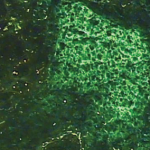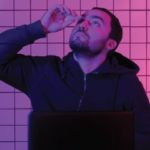Delaying the diagnosis, and thus the treatment, prolongs suffering and could impact the progression of disease. Until we have better tests available, there needs to be a clear message that many patients with Sjögren’s will not meet these stringent criteria, and should be managed based on the clinical picture. Clinical diagnosis is hardly a new concept to rheumatology. RA is often diagnosed based on clinical evaluation in the early stages. Research criteria do not need to be the same as clinical criteria. Rheumatologists use 4/11 criteria for lupus study populations, yet, for some, 3/11 criteria are considered sufficient to initiate treatment.
Medical Management and Clinical Studies
While some progress has been made in the treatment of dry eyes and dry mouth, few studies have looked at the impact that treatments have on systemic manifestations. The lack of clinical studies for Sjögren’s is astounding, given its high prevalence. Without such basic information, how can we possibly know if early intervention will make a difference?
Clinical studies for Sjögren’s tend to be small, short term, and poorly controlled. According to a recent review by Ramos-Casals et al,5 only five studies have examined the use of hydroxychloroquine, a mainstay of treatment. Only one of these was a randomized controlled trial. Two other commonly used medications, prednisone and methotrexate, have not been specifically studied for their impact on extraglandular manifestations. While new biologic agents keep appearing on the market, they are almost exclusively studied in other diseases. Because my disease has been severe, I have gone out on a limb and tried a number of these medications—without much success—despite a lack of evidence for their use. I’m brave enough, and desperate enough, to take big risks. But having no data to support these “n of 1 experiments” is rather unsettling.
A Wish List for Research and Clinical Management
Research
- Make it a priority to find a definitive test, such as a novel biomarker, that can accurately identify Sjögren’s or even preclinical disease.
- Clearly define the spectrum of manifestations of Sjögren’s. Study large numbers of patients to determine:
- The prevalence of various symptoms and complications, including fatigue, pain, quality of life, and cognitive function, which are often overlooked in research and clinical settings.
- The tendency of the disease to flare and progress, with and without treatment.
- Which interventions make a difference. We must start thinking outside the box. Many experts agree that various environmental factors may be key in triggering autoimmunity in a variety of diseases. It seems logical that different triggers may combine to push susceptible individuals over the tipping point into clinical disease.
- How diet, pathogens, the microbiome, stress, pain, and toxins affect the development and progression of Sjögren’s. What is the role of complementary medicine?
Clinical Practice Guidelines
- Create practical guidelines for management, not limited to sicca complex. The Sjögren’s Syndrome Foundation is currently engaged in this initiative.
- Implement a meaningful disease activity index that includes an assessment of fatigue, pain, and quality of life at every visit.
- Routinely assess common systemic manifestations, including gastrointestinal, respiratory, cognitive, and neurologic manifestations.
Educate Medical Providers, Including Those in Primary Care, about Sjögren’s
Most clinicians are either unfamiliar with Sjögren’s or underestimate the prevalence and severity of the disease.
- Sjögren’s needs to become a front-burner diagnosis. Clinicians who treat adult women probably see a significant number of Sjögren’s patients, frequently missing clues that could lead to diagnosis.
- Train clinicians about the common and scattered manifestations of the disease. Recommend steps to diagnosis and basic management of common symptoms.
- Clinicians should understand that the current classification criteria are meant to be used for research, and can be misleading when applied to individual patients in a clinical setting for the purposes of diagnosis. Lack of laboratory or biopsy confirmation does not rule out diagnosis.
- And finally, stop telling us to be glad that we don’t have lupus!



